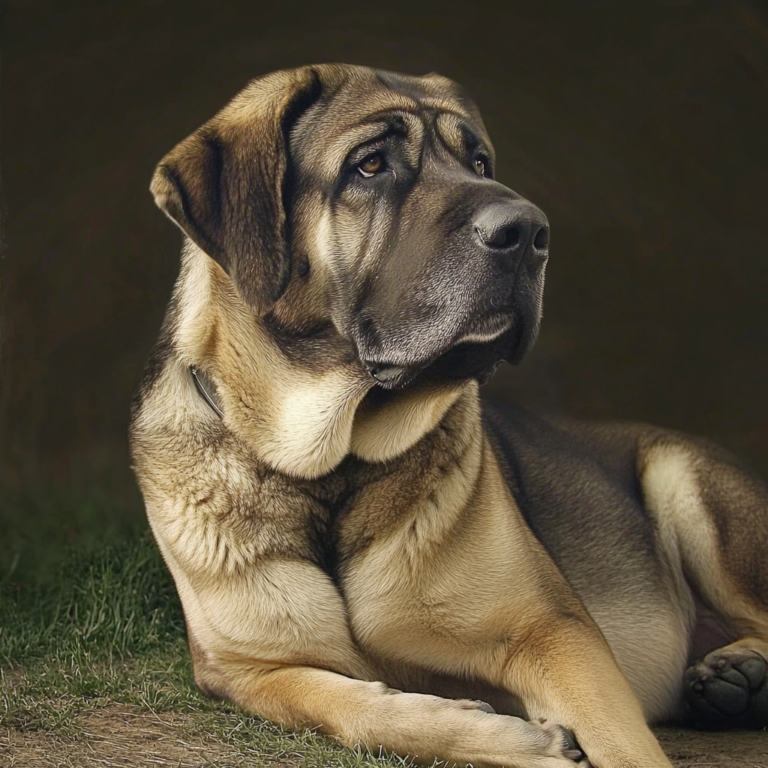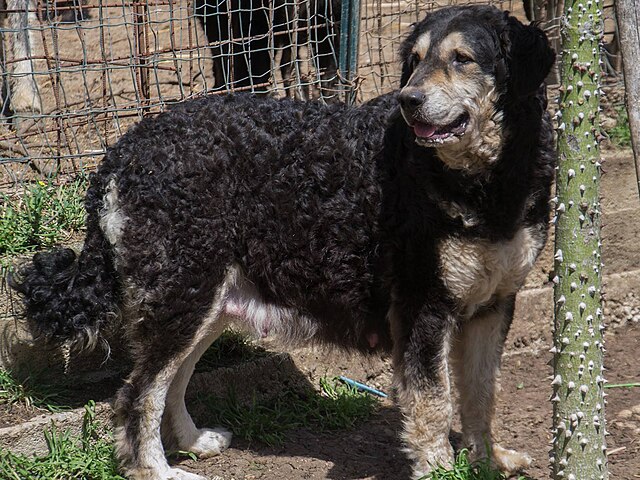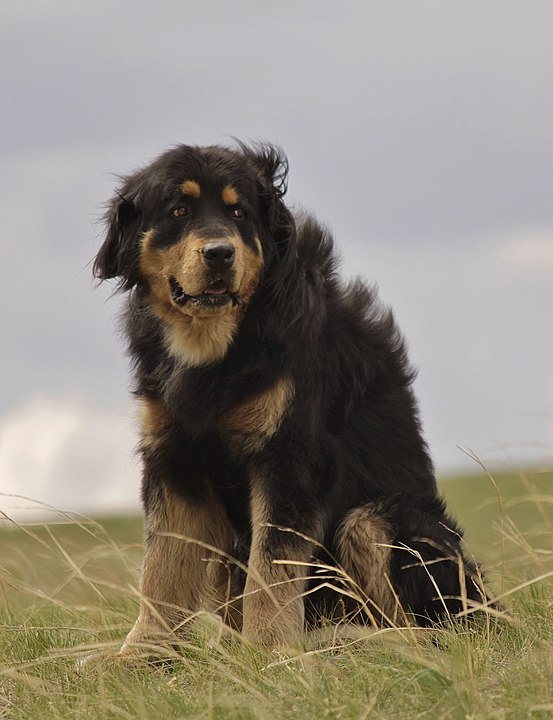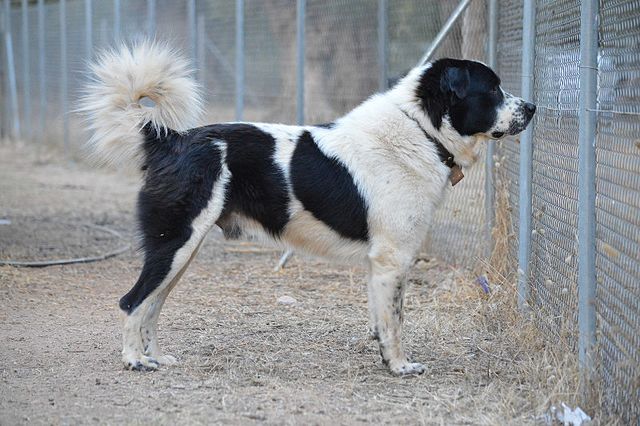The Great Pyrenees is one of several Livestock Guardian Breeds specifically bred to watch over livestock. These giant, fluffy dogs are vastly appealing but potential owners should know that this is not a breed for just anyone! Their guarding instinct is hardwired into their brains, which – although makes them extremely loyal and protective – can also make them into a liability if not given strict management, training and socialization. Their guarding instinct combined with their very independent personality means that living with a Pyr can be very different from living with another breed of dog.
Because of their high territoriality, Pyrs will not naturally accept visitors into the house or onto the property. Instead, the owner must be present and introduce the dog to each new person first. This can be a problem in households where strangers often come and go. While most Great Pyrenees will not immediately “go for the kill” with an intruding stranger, they will put up a very loud and ferocious alarm and will escalate their defense efforts to match that of the intruder. The better socialized and trained the dog is, the more predictable he will be. A well-bred, well-trained Pyr has been said to be an excellent judge of character while a poorly-bred, unsocialized, untrained dog can be a liability. The breed has all the makings of a sensible guardian but these traits must be fostered.
Also because of their territorial nature, the Great Pyrenees isn’t always super friendly towards other dogs. Most males will not tolerate living with another male (especially if neither is neutered), and some females have problems living with other females. Opposite-sex pairings can yield much better results, and the age, size and temperaments of the dogs (as well as the skills of the owner) has a lot to do with compatibility.
The Great Pyrenees can be an excellent family dog and can be very patient and gentle with children, although supervision is highly advised (like with most breeds). Not surprisingly, they can become very protective of young kids and may even try to intervene when the parent disciplines the child. For obvious reasons, the adults of the household must stay on top of this behavior and not allow it to happen. Obedience and structure will help the dog from becoming pack leader of the entire household.
Although intelligent, the Great Pyrenees can be exceptionally willful. Some people compare training a Pyr to trying to train a cat – it can be done, but it will take a different approach. Just like a cat, these animals think for themselves rather than naturally obeying a command blindly. This is not the typical “off-leash ready” breed, nor is it the breed for those who want to get high scores in obedience competitions. It CAN be done, but it will take much more time and dedication. Keep in mind that Pyrs often learn quickly but become bored easily – too much repetition is a common cause of bad obedience. 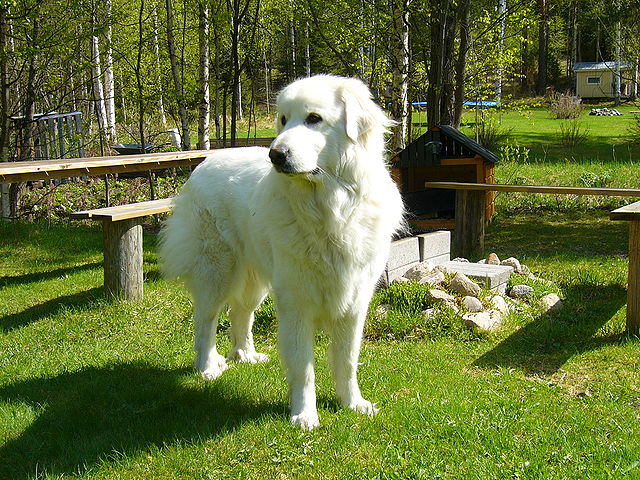
The Pyr is generally very healthy and long-lived for a dog of its size (often reaching 10-12 years of age). Psychologically, they need to live in an environment without constant chaos. They do much better with structure and routine, and may start to become “unhinged” if the household cannot meet these demands. They can also become destructive and hard to handle if they are left outside with no attention ever given to them. Being able to meet the mental needs of these dogs is an important consideration, if one is considering owning a Pyr.
Pyrs are not only giant in size, but also extremely strong. An owner should be physically strong enough themselves to handle the dog. Yes, obedience training is definitely necessary (which will curtail pulling and make the dog easier to control), but even a trained Pyr is not a great match for someone who is very frail. Seeing as these dogs need a good long walk every day, the owner should be physically able to provide this. An owner must also not mind a barking dog, as this breed naturally uses his voice frequently, especially at night.
Great Pyrenees are very affectionate with those that they know, and are trustworthy gentle giants with their own families. Not particularly active, they enjoy lounging about the house and yard but prefer to be able to keep one eye on their owner whenever possible. Although they are mostly sedentary, this is not a breed for an apartment. These giant dogs must have room to roam. Without an escape-proof fence they are prone to wandering away, so make sure the fence is tall and dig-proof (digging is in their blood). While they are able to live outdoors, this isn’t always necessary as most make very good house dogs – their calm nature means they aren’t apt to knock over furniture or break things, and their self-cleaning (dirt retracting) coat makes them somewhat tidy.
As might be expected from his profuse coat, the Great Pyrenees does shed! Regular brushing twice a week will help with this issue but will not completely eliminate the fluffy clouds of white hair that will undoubtably collect in the house (or on your clothes). Be advised that they should never be clipped down, as their coat protects them from both hot and cold weather! Keeping on top of nail trimming is another necessary chore that must be kept up with, and Pyrs have extra toes on their hind feet which means extra nails. Some members of the breed drool when excited or hot so keeping a drool rag ready on hot days may be a good idea.
One might wonder why anyone might want a breed that requires so much extra time and work, but fanciers of the Great Pyrenees have much praise for the loyalty and devotion of these beautiful dogs. It has been said that a Pyr can “look inside your soul” and read your emotions like no other breed. There is a very sensitive and intuitive nature inside these courageous dogs, and for those that are up for the challenge, the relationship with the dog can be very rewarding.
